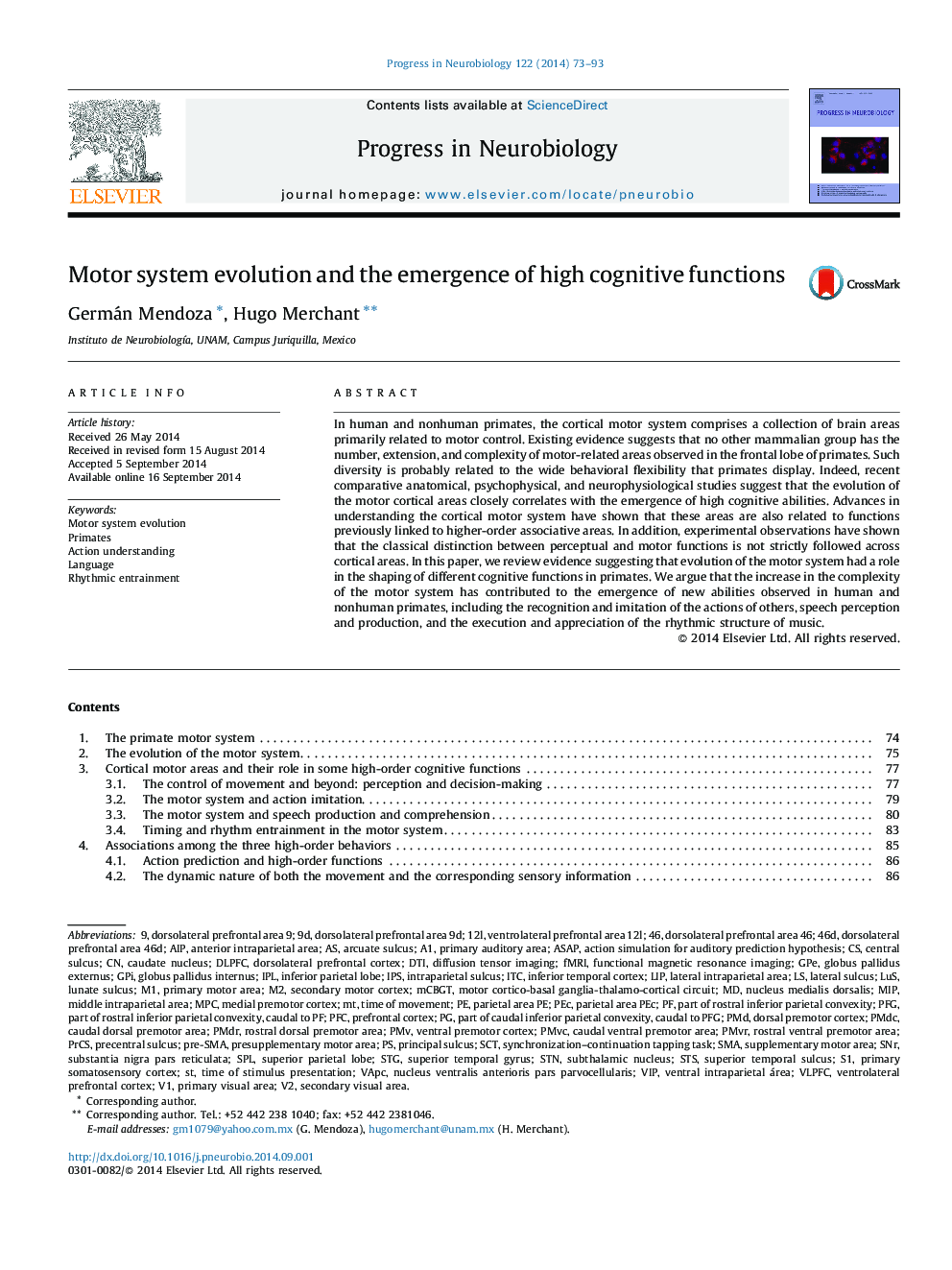| Article ID | Journal | Published Year | Pages | File Type |
|---|---|---|---|---|
| 4353340 | Progress in Neurobiology | 2014 | 21 Pages |
•Primates show quantitative and qualitative diversification of the motor cortical areas.•Evidence suggests motor areas participate in perceptual and cognitive functions.•Human motor and auditory systems show a special functional link.•Rhythmic entrainment probably evolved gradually in primates.
In human and nonhuman primates, the cortical motor system comprises a collection of brain areas primarily related to motor control. Existing evidence suggests that no other mammalian group has the number, extension, and complexity of motor-related areas observed in the frontal lobe of primates. Such diversity is probably related to the wide behavioral flexibility that primates display. Indeed, recent comparative anatomical, psychophysical, and neurophysiological studies suggest that the evolution of the motor cortical areas closely correlates with the emergence of high cognitive abilities. Advances in understanding the cortical motor system have shown that these areas are also related to functions previously linked to higher-order associative areas. In addition, experimental observations have shown that the classical distinction between perceptual and motor functions is not strictly followed across cortical areas. In this paper, we review evidence suggesting that evolution of the motor system had a role in the shaping of different cognitive functions in primates. We argue that the increase in the complexity of the motor system has contributed to the emergence of new abilities observed in human and nonhuman primates, including the recognition and imitation of the actions of others, speech perception and production, and the execution and appreciation of the rhythmic structure of music.
